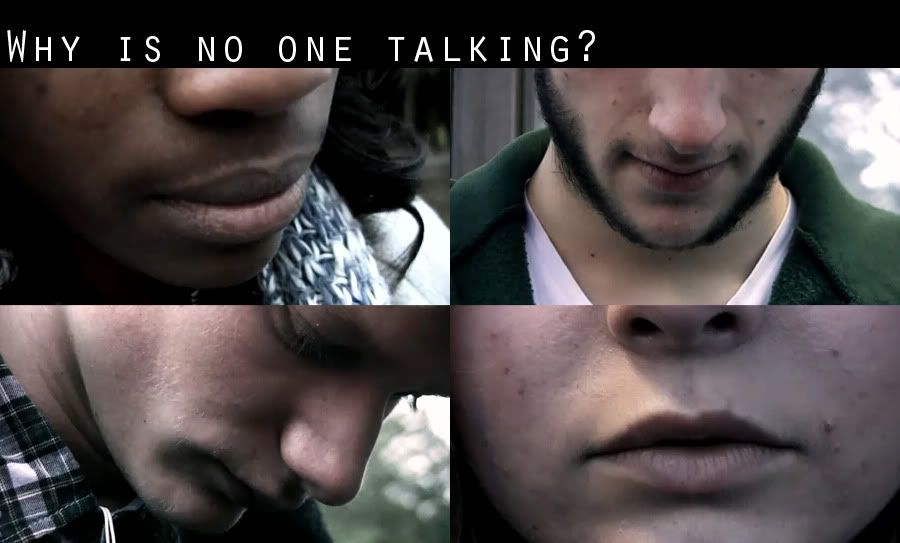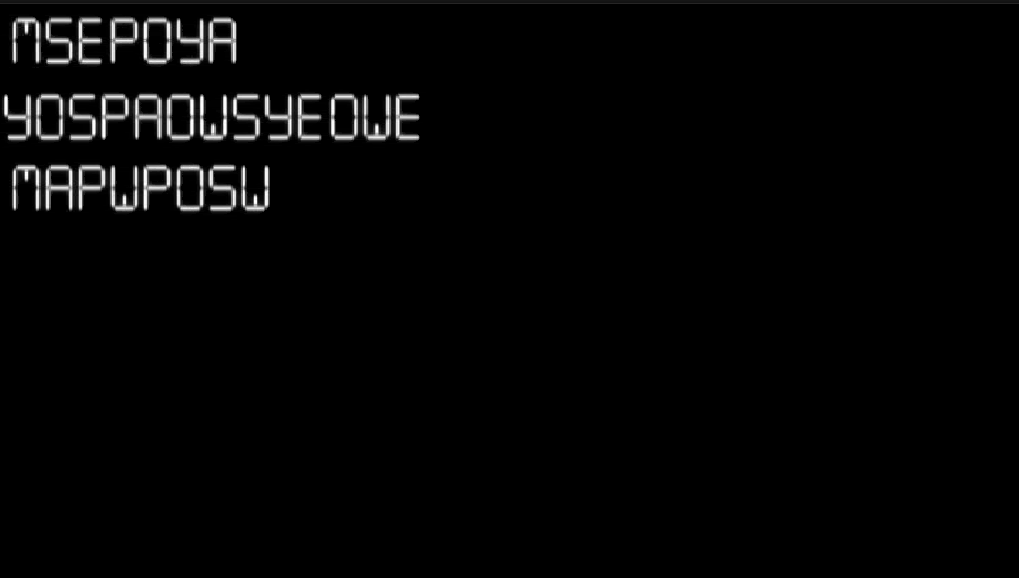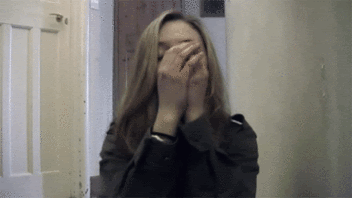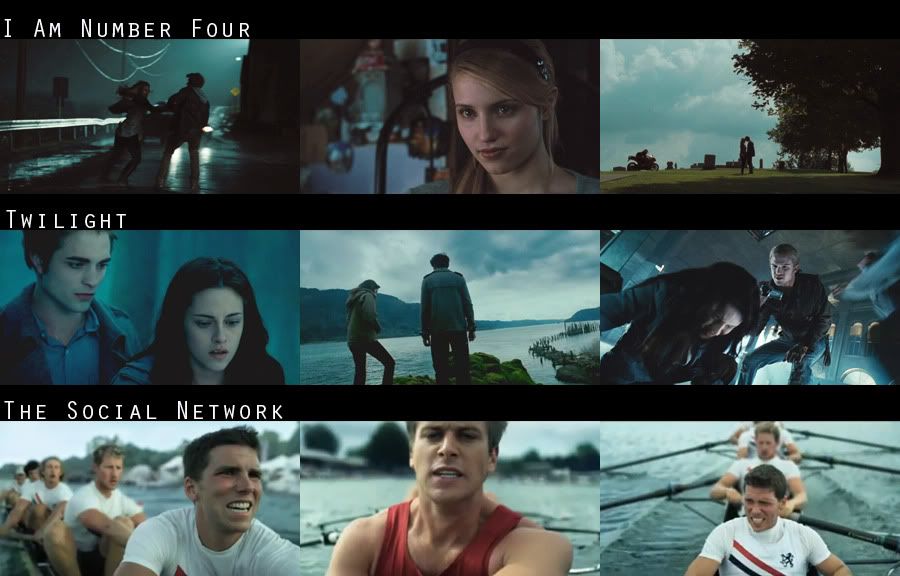1) In what ways does your media product use, develop or challenge forms and conventions of real media products?
Genre
Our film Mute would be classified under the genre of Action/Drama. As a group, we have decided to follow the conventions of genre of action/drama quite closely, with a few convention challenges too. We have followed the conventions in the way that we have one main protagonist, with a few supporting protagonists, (Ava being our main, and the two boys who can speak being the two supporting). However, we have slightly challenged the main convention that the main protagonists in action films are young adult males (e.g. James Bond films, Die Hard, The Bourne Series) with our main protagonist being a teenage female.

Although our final media product is only the opening sequence, we as a group have also planned out the rest of the film, which generally goes along with the main conventions of action/drama, with strong antagonist characters (the oppressive government) intense action scenes, chase scenes, friendship and love. These events and themes occur in many action/drama films, for example I Am Number Four.
Our film is also set in the city of London which also follows the conventions of action/drama films being set in cities. In fact, many action/ drama films have been set in London, for example Sherlock Holmes and Casino Royale.

Narrative Structure
Conventions of an action/drama film:
- Todorov’s theory of narrative: the classic narrative pattern of equilibrium – disruption – resolution
- Barthe’s theory of enigma code
- Levi-Strauss’s theory of binary opposites
How we included these theories in our film/film opening:
- Todorov: As we only filmed an opening sequence lasting 2 minutes, Todorov's theory is not as evident. Our opening sets up the starting equilibrium of a world without speech, but the disruption and resolution is not seen yet (this is shown in the rest of the film!)
[To see Todorov's theory for the rest of the film, visit our group blog, here.]
- Barthes: Our opening sequel is filled with many enigma codes from the start, and this is to intrigue the audience, and make them think ‘what is going on?’ so that they will want to watch the rest of the film. The first scenes the audience will see is a montage of shots of many teenagers texting at a bus stop, not talking to each other at all, making the audience think ‘why are they not talking to each other?’

- Levi-Strauss: Our opening sequence contains quite a few binary opposites, for example the large contrast in sound when Ava takes her earphones out: in the first few shots there was a loud drum and bass track, but once she takes them out, it is almost silent.
Form
Functions of opening sequences:
- To introduce the main characters
- To introduce the main themes/ establish what is going on the film
- To engage the audience, and make them want to carry on watching it
- To show the credits to the audience, e.g. distributor, director, producer, writer, main actors...etc.
- To tell the audience the title of the film, therefore suggesting/signifying the genre
Conventions/typical features of opening sequences:
- Show the main characters and give the audience an idea of what they are like
- Have music/soundtrack in the background to engage the audience
- Have a variety of shots showing where the film is set
The opening sequence starts with a black screen and white credits showing the film production company and distributors, therefore giving the audience an idea of what the film is going to be like. A montage of shots of teenagers waiting at bus stop is then shown, setting the scene of the film (London). We then follow Ava’s journey from the bus stop to her home, therefore introducing her to the audience, and as we see her listening to music, we get an idea of what she is like. When she returns home we see her ‘talk’ to her brother and mother via her phone/communicator, and because of this, the audience get an idea of what the film is about: a world without speech. The opening sequence ends on a news article explaining that voiceboxes may still exist, and together with the knowledge that this is a parallel universe where speech does not exist, this makes the audience want to carry on watching the film. During the opening sequence, the audience sees the titles of the main actors, writer, editor, producer and director, and hears a loud drum and bass mix in the background, engaging them and letting them know more about the film they are about to watch.
As our opening sequence contains all of the conventions mentioned above, we feel that it works really well, and does the job that an opening sequence should do, similar to the opening sequence to 10 Things I Hate About You:
Style
Soundtrack: During the first half of our opening sequence, during all the outdoor scenes, a drum and bass mix in the background is heard. This gives it an upbeat, edgy young feel, and as it is played really loudly, it brings the audience into the world of the film, and in the shoes of Ava. We felt as a group that this was the most appropriate song, as it fits in with Ava’s edgy, strong personality, and as the song sounds slightly electronic, it fits in with the idea and running theme of technology.
Titles: Our opening sequence contained very basic and minimalistic titles, especially the ones used for the Production Company, distributor, and film title. For these titles, we used a black background with white scrolling digital text, made using Live Type. These titles were used as it reflects the running theme of technology used in our film, and as they are very basic and minimalistic, it reflects the low key, quiet society in our film.

We also included basic titles for the names of the actors, director, writer, editor and producer, and these were just placed above the shots. They were placed near the bottom of the frame, and were revealed using soft fades, so that they don’t distract the audience from the action.
Camera Work: When filming our opening sequence, we almost always used a tripod, unless a tripod was not suitable for the situations, e.g. when the tripod wouldn’t fit in tight settings. This was done to give our opening still, straight images, fitting with the hard, cold society.
We also used focus pulls in our opening, e.g. when Ava walks away from her brother, and when she walks away from the staircase, into her room.
Editing: Continuity: Although we showed a few time lapses to speed up the pace in a few shots, our film generally followed all the continuity rules. We made sure that we edited to show matches on action, so that the film would look right to the viewers’ eye, and this is most evident in the shots where Ava has entered her house.

Editing: Cutting the film to music: We used the music to cut our film: cutting and changing shots to the beat of the music. This is evident in our montage at the beginning, where each shot changes to a beat in the soundtrack. This was done to give our opening sequence a pace and rhythm that not only matched our music, but made it easier to watch. We also cut up a few long shots and deleted every other part to create slight time lapses, so that they would match the music too. This was shown in the scenes where Ava gets onto the bus, and when she walks down the street towards her house.
Colour grading: We used Adobe Premiere to colour grade our opening sequence. We used tools such as the Three Way Colour Corrector, levels and ProcAmp to make the sequence slightly tinted blue and grey, and bring the saturation down. This was to reflect the sad, oppressive society presented in our film, and was inspired by films such as The Social Network, Twilight and I Am Number Four.

Thursday, 31 March 2011
Evaluation Question 1:
Posted by Latymer Media 2010 at 10:18
Labels: evaluation
Subscribe to:
Post Comments (Atom)

0 comments:
Post a Comment